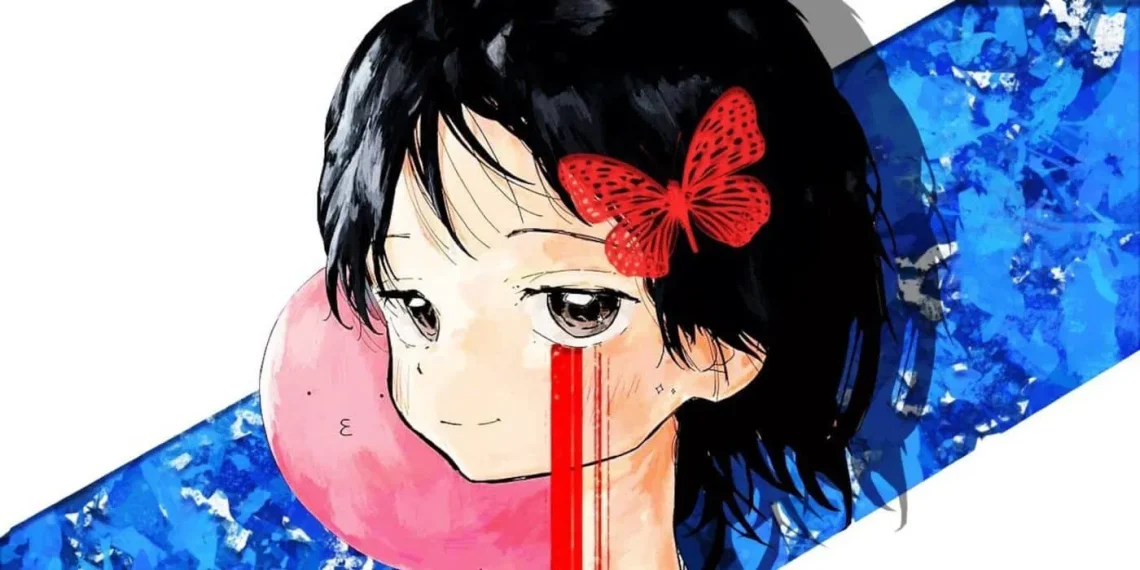The finale of Takopi’s Original Sin delivers an emotional gut punch wrapped in layers of humor and sorrow, making for a truly unforgettable conclusion. From the outset, the manga lures readers in with its seemingly lighthearted premise, only to unravel a deeply profound narrative about pain, empathy, and the unintended consequences of trying to fix what is broken. As Takopi’s journey reaches its climax, the story balances whimsical absurdity with heart-wrenching truths, creating a lasting impact.
At its core, Takopi’s Original Sin is a tale of innocence clashing with the harsh realities of human suffering. Takopi, an alien with an earnest desire to spread happiness, quickly learns that good intentions are not always enough. The manga masterfully navigates themes of emotional complexity, personal growth, and the unpredictable nature of human relationships. Each chapter peels back another layer of the story’s deeper meaning, making the ending feel both inevitable and devastating.
This article will explore the intricate emotions behind Takopi’s Original Sin’s ending, shedding light on the characters’ journeys and how their experiences lead to an unforgettable resolution. Whether you’ve followed the story from the beginning or are discovering it now, we’ll break down the key takeaways that make the manga’s conclusion so powerful.
The Story’s Setup: Takopi and His Mission
At the heart of Takopi’s Original Sin is Takopi, a seemingly cheerful and innocent character who comes from another world. His mission? To bring happiness to the children he encounters. However, Takopi’s approach is far from conventional. He tries to use his peculiar methods to turn the sadness of others into joy, but this leads to unpredictable and often tragic consequences. Takopi’s well-intentioned efforts make for both comedic moments and moments of deep sorrow. His optimism is both charming and deeply flawed, and as the story progresses, viewers are left questioning whether his methods truly help others.
While Takopi tries his best to fulfill his mission, he discovers that happiness cannot be forced. He learns that people’s pain and suffering cannot always be solved through simple fixes or superficial methods. The series gradually reveals the deep sadness that many of the children Takopi encounters experience. These emotional undercurrents set the stage for the dramatic and emotional conclusion.
The Climax: A Heartbreaking Twist
As the series progresses toward its climax, Takopi’s journey takes a darker turn. His naïve attempts to solve problems lead to unintended consequences. Takopi’s desire to fix things for the children he encounters causes him to overlook the complexities of their emotions and situations. This oversight leads to a heartbreaking realization that his approach to “helping” others might not be the right one.
The climax shows Takopi facing the harsh reality that his actions have caused more harm than good. This twist in the story highlights the limitations of his understanding and the consequences of trying to impose happiness on others. It forces Takopi to confront the flaws in his approach, and his character is left shattered by the realization that he cannot control the emotional well-being of others as he once thought.
This turning point is critical because it shifts the tone from the whimsical to the somber. As Takopi grapples with the unintended consequences of his actions, the readers are given a profound emotional experience. The buildup to this moment is slow, but once the twist is revealed, it impacts both Takopi and the audience deeply. The ending feels like a culmination of everything Takopi has learned — and still has yet to learn.
The Ending: A Bittersweet Resolution
The final moments of Takopi’s Original Sin are full of complexity. Takopi has grown throughout the story, but he still has a long way to go. In the end, his actions lead to a bittersweet resolution. The children he meets and attempts to help are left with mixed emotions — some have been deeply impacted by his kindness, while others are left feeling betrayed by his misguided attempts at intervention.

Takopi’s ultimate lesson is that sometimes, the best way to help others is not to impose your idea of happiness onto them, but to give them the space and support they need to find their own path. The ending is sad because it underscores how much Takopi still has to learn, but it also carries an underlying message of hope. Takopi’s journey is far from over, and though he may have failed in certain ways, his growth is evident. The conclusion offers a sense of closure while leaving room for the possibility of future self-discovery.
Key Themes Explored in the Ending
1. The Limits of Positivity
One of the most profound themes in Takopi’s Original Sin is the idea that positivity and joy cannot be forced. Takopi’s initial belief that he could make others happy by simply injecting optimism into their lives crumbles as he realizes that each person’s emotional state is complex. Happiness cannot be achieved through a one-size-fits-all solution, and this realization becomes a central part of the manga’s ending.
2. The Complexity of Emotions
The story emphasizes the complexity of human emotions, particularly the emotions of children. Takopi’s interactions show that while laughter may mask sadness, it does not eliminate it. The manga also illustrates that emotional growth often comes from experiencing pain and facing it head-on, rather than bypassing it with forced happiness.
3. Growth and Self-Reflection
Takopi’s arc is a story of personal growth. Throughout the series, he learns the importance of self-awareness and the need for empathy. In the end, Takopi must confront his flaws and take responsibility for his actions. This theme of personal growth and self-reflection ties the ending together, highlighting that true growth is a process that often involves failure and hardship.
A Reflection on the Manga’s Emotional Impact

The conclusion of Takopi’s Original Sin is a testament to the power of storytelling that blends humor with deep emotional insights. The ending resonates because it mirrors real-life experiences, where growth often comes with hardship, and where attempts to “fix” others can sometimes lead to unintended consequences.
While the story may be filled with absurd moments, it remains grounded in the raw emotions that make us human. Takopi’s journey is ultimately one of self-discovery, and its ending offers viewers the chance to reflect on their own relationships with happiness, empathy, and emotional growth.
Though Takopi’s Original Sin leaves readers with a bittersweet resolution, its message lingers far beyond the final chapter. The series ultimately suggests that while happiness is an admirable goal, it cannot be forced upon others. Instead, true joy comes from understanding, patience, and the willingness to let people find their own paths. Interestingly, despite the manga’s often tragic tone, its author, Taizan5, initially gained recognition for drawing humorous four-panel comics—a surprising contrast that only adds to the richness of Takopi’s Original Sin’s storytelling.
[Updated: 04/03/2025]





